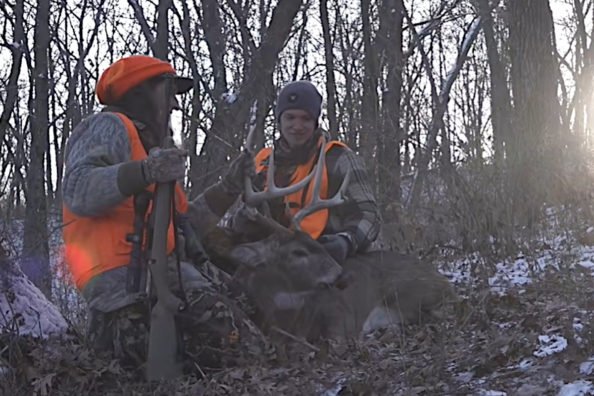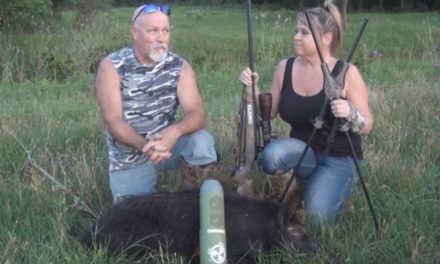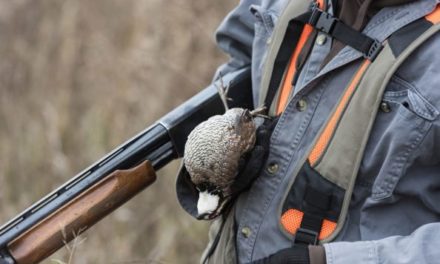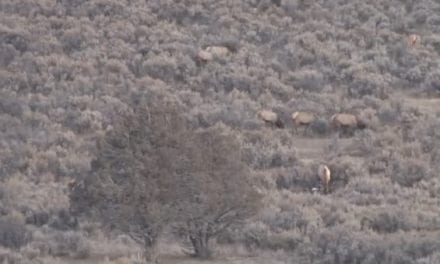
Pushing is one of the oldest and most effective forms of deer hunting.
Any deer hunter can tell you that bagging any whitetail deer is tough. These animals are extremely smart and wary to their surroundings. Especially the older mature bucks that have survived a hunting season or two and are familiar with how hunters do things. It can make for some long, boring days in a tree stand when the animals are wise to your plans and deer movement is at a minimum.
Sometimes, it is going to be nearly impossible to bag that big buck using the usual still hunting methods of deer hunting. Especially when it is getting late in deer season and your freezer is still devoid of big game meat.
This is often the prime time to force things to happen through a deer drive. Do not worry, it has nothing to do with your vehicle. We will explain this technique in full, how to conduct organized drives safely, and we will weigh the pros and cons. We will also explain the best times to use this controversial hunting technique.
What is a deer drive and how does it work?
Deer driving or “pushing” as some hunters call it, is a very old hunting technique. In fact, the practice of driving game dates to the early humans of the ice age, albeit with some slight variations. Ancient humans and Native Americans used to drive animals like bison into pitfall traps or box canyons where they could easily be picked off. Modern drives are a little different. At its most basic, one set of hunters act as “standers.” They position themselves along likely escape routes while another group of hunters known as drivers move into an area where the deer are hiding.
If done properly, the drivers should encourage the deer to run past the standers, giving them a shot at the animal they may not have gotten otherwise. There are some variations to the technique. Most notably is the use of dogs to do the driving portion. However, for the most part, you will find these hunts conducted in much the same way.
While driving can be done while bowhunting, most people reserve this technique for firearms or muzzleloader season rather than archery deer season. Because shot opportunities are often fast, through tiny openings in thick cover. It is a popular technique in Midwestern states like Michigan, Illinois, and Wisconsin, but also states like New York and Pennsylvania. Most hunters use pump-action shotguns, often with buckshot because they must take shots at running deer. For states where rifles are legal, pump-action or lever action guns are usually preferred.
Many hunters utilize this technique in the late season when the deer are locked down in bedding areas and only moving into food plots and other areas at night. By utilizing the animal’s fear, you can goad them into moving when all blind and stand hunting techniques have failed.
How do you set up a deer drive?
Well, first you are going to need some hunting buddies. Some who will act as standers and others as drivers. The number of hunters in the drive can vary wildly. In some states, there may be two dozen or more hunters in a single drive. However, as the video above from the Hunting Public demonstrates, you only need two hunters to have an effective drive. You can cover more escape routes with multiple hunters though.
Make sure you are driving an area where you know the terrain. You are not going to have much success if you do not know where the deer are likely to go. Wood lots adjacent to fields or that have natural funnels or pinch points between cover are great places to place standers. The technique varies a bit based on each group and location. The drivers slowly walk towards the standers, hopefully moving the deer towards the standers for a shot. Although sometimes a driver can get a shot in too.
One thing to remember is that sometimes a big buck will not run. They may stay hunkered down, not moving in hopes that you simply walk past them. Remember they are masters of camouflage, and sometimes running is not the best defense. Because of this, some hunters like to make a lot of noise on a deer drive, yelling and cracking branches because it startles the deer up off their feet. Instinct takes over from there and they get moving.
Some hunters prefer to be more subtle with their drives and simply walk through the woods silently, letting the wind direction carry their scent to the deer. This makes the deer flee the opposite direction, towards standers that are directly downwind.
Safety and courtesy towards other hunters.
We do need to address a few issues with deer drives. Some of which are reasons some hunters do not like this technique. First is safety. Hunter orange is a necessity for this kind of thing. The more the better. Because when the drivers are working towards the standers, you do not want the standers to take a shot in their direction. This is another reason some hunters prefer to make a lot of noise while driving deer, so the position of the standers is obvious.
Make sure you run through the plan with everyone carefully before you begin your drive so everyone knows exactly where the other will be. Once you have that, do not deviate from it. That is how accidents happen. Also, some hunters miss out on chances at big bucks because they do not stay in place until the end of the drive. Never take a shot in the direction where you can see blaze orange beyond your target. Try to wait until the deer is parallel with you so projectiles are not flying through the woods towards the drivers.
The other thing we need to discuss is simple common courtesy towards other hunters. Deer drives are legal on public land in most states. However, it is considered a bit rude to start up a drive where other hunters are sitting on stand. If you see a bunch of vehicles or spot hunter orange off in the distance, it may be best to find another area to drive. Some hunters only practice this technique on private hunting property since hunting public land is hard enough without others purposely spooking all the deer. Just use a little common sense when setting up your drive and you should be able to have a fun, safe hunt without conflict with other hunters.
Pros and cons of drives.
Like any hunting method, there are some upsides and downsides to organizing a deer drive. You may want to take these into consideration before organizing one. One big pro of a drive is that it can stir deer to movement that are otherwise completely locked down. Some big bucks will find a secluded bedding area during firearms season and lay on their belly through the whole day, not moving until darkness has set in. A deer drive can force an otherwise completely nocturnal buck to move. Another plus is the fast action. You do not have to sit and wait for hours for deer to start moving in most instances. We have heard of hunts that only lasted five minutes because that is how fast the deer got moving. Third, a drive is a good last-ditch effort to fill your tags at the end of the season. If all other tactics have failed, a drive will usually work.
The biggest con to the technique is how high impact it is on a hunting area. When you have dozens of hunters purposely scaring deer through the woods, the big bucks are likely going to avoid the area for a while after that. We do not recommend one of these for opening day because of that. Some hunters purposely wait until the final days of the season and use drives as a “Hail Mary” technique because they do not want to spoil their hunting spot too quickly.
The other huge downside is that drives can push bucks to a neighboring property where they get shot by someone else not in your group. They could also drive a buck out of a sanctuary on your property for the rest of the season if you are not careful. Because of that, we like to think of drives as a “high risk, high reward” type of scenario. If you have multiple spots to hunt, it can be easy to drive one or two of them if you still have another place to go. If you only have one area to hunt, you might want to wait and use your drive for late season when the season is wrapping up anyway. Because you may drive a buck out of your area permanently.
At the end of the day, deer drives should be just another tool and option in your hunting arsenal. They are a time-tested and proven technique that produces deer when all others fail. They are also a great way to bond with your family and friends this season, so if you have never organized one, you may want to think about starting.
Products featured on Wide Open Spaces are independently selected by our editors. However, when you buy something through our links, we may earn a commission.
For more outdoor content from Travis Smola, be sure to follow him on Twitter and check out his Geocaching and Outdoors with Travis YouTube channels.
NEXT: THE AXIS DEER AND HOW THEY’RE IMPACTING PARTS OF THE UNITED STATES
WATCH
The post What is a Deer Drive? A Guide for New Hunters for This Popular Technique appeared first on Wide Open Spaces.
















